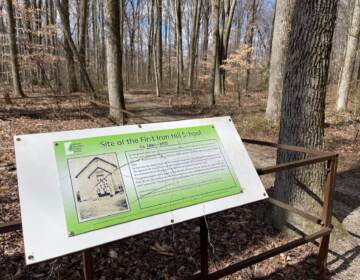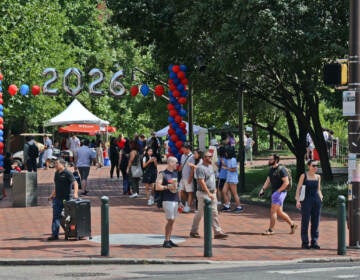Quarantine inspired us to explore parks. Science suggests the habit could stick.
Park and trail use skyrocketed during our stay-at-home period. Social science gives us reason to believe these healthy habits will stick.

Kids exploring the Wissahickon creek near the historic Evans-Mumbower Mill. (Photo by Julie Watt)
For all the hardship and heartache this pandemic has brought, I can’t help but appreciate what it has done for people’s relationship with green spaces.
Park and trail use has skyrocketed since the stay at home order was issued, with some of our trails seeing well over 500 visitors on a beautiful Sunday afternoon. The outdoors has become a place where people go, not only to escape, but to connect.
The transformation in people’s relationship with parks and trails has been stunning – especially for children. A study published in 2000 estimated that children were spending about 30 minutes per week in unstructured outdoor activity — that’s only five minutes a day. Based on the documented rise in park and trail activity during the pandemic, I think it is safe to say that the number has risen for kids privileged enough to live near parks and trails, especially now that Philadelphia is in the green phase and reopening. For the first time in many years, I have seen kids climbing trees and building stick forts at one of my local parks, activities that were common in my childhood, but have been missing from the childhood of my children’s generation. These activities are incredibly beneficial to healthy childhood development. They help kids to build self-confidence and exercise their ability to assess and manage risk.
I am heartened by what I am seeing and hopeful that these patterns will continue even after the stay-at-home order is lifted. Social science research gives us reason to believe that many people will continue to visit parks and trails more frequently than they did before the pandemic. Specific lifestyle and behavior changes are more effective if they take place as part of a larger disruption to a person’s normal routines. One study out of Kyoto University in Japan found that when drivers were forced to use public transit due to a closed roadway, former committed drivers continued to use public transportation more frequently after the road reopened. In another study out of Zurich University, researchers found that when people gave up their cars for two weeks and were given free e-bike access instead, they drove much less when they got their car back.
Behavior change is hard, even when we know that a change is better for us or aligns with our values. Thankfully, when we are compelled to make a change due to larger forces it seems that we are able to sustain that change even when life reverts back to “normal.”
One of the unexpected impacts of quarantine is that it may result in a lifestyle that continues to value time spent in parks and trails. Children fortunate enough to live near green spaces may be gifted with a childhood that includes more unstructured play outdoors.
Gail Farmer is Executive Director at Wissahickon Trails, a nonprofit working to connect land, water, and people in the Montgomery County portion of the Wissahickon watershed.

Subscribe to PlanPhilly
WHYY is your source for fact-based, in-depth journalism and information. As a nonprofit organization, we rely on financial support from readers like you. Please give today.







